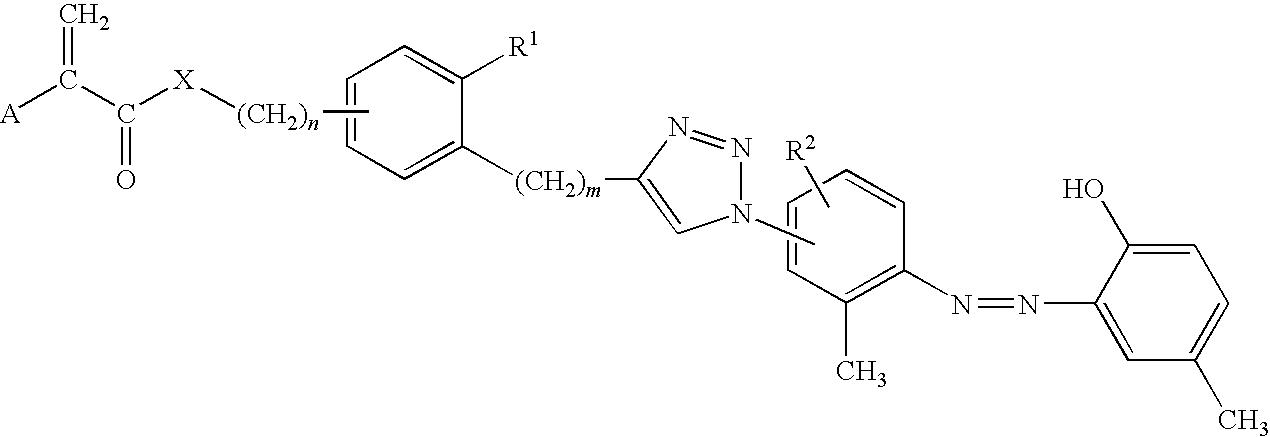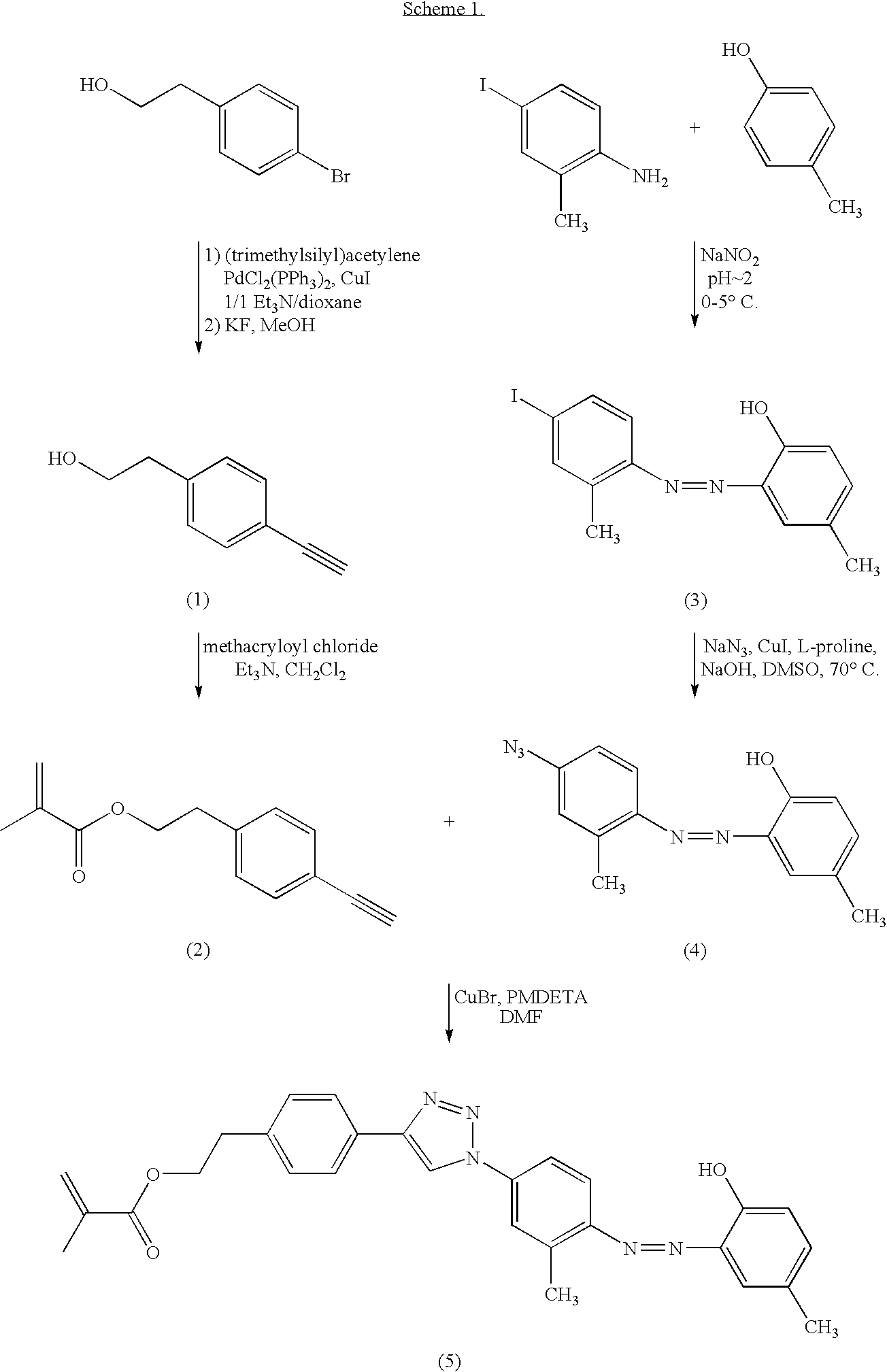Ophthalmic lens materials containing chromophores that absorb both UV and short wavelength visible light
a technology of chromophores and ophthalmic lenses, applied in the field of chromophores, can solve problems such as the loss of optical clarity of lenses
- Summary
- Abstract
- Description
- Claims
- Application Information
AI Technical Summary
Benefits of technology
Problems solved by technology
Method used
Image
Examples
example 1
Synthesis of (1)
[0049]A flask is flushed with N2 and charged with 4-bromo-phenethyl alcohol (20 mmol) and dissolved in 1 / 1 Et3N / dioxane. Bis(triphenylphosphine)palladium(II) dichloride (PdCl2(PPh3)2) (0.2 mmol) is added, followed by 0.4 mmol of CuI. Trimethylsilylacetylene (24 mmol) is added drop-wise to the reaction mixture. The reaction mixture is stirred overnight under N2. The solvent is removed under vacuum and the resulting liquid is extracted by washing with ethyl ether. The ethyl ether extracts are combined and washed with H2O, then dried over anhydrous sodium sulfate. The solvent is removed under vacuum and the product is purified by column chromatography. The purified product is placed in a N2-flushed flask and dissolved in methanol. Potassium fluoride (65 mmol) is added and the reaction stirred under a N2 blanket for 16 h. The reaction mixture is poured into CH2Cl2 and extracted with H2O, then dried over Na2SO4, filtered and the solvent is removed under vacuum. The result...
example 2
Synthesis of (2)
[0050]A flask is flushed with N2 and charged with 15 mmol of (2), 17 mmol of triethylamine and CH2Cl2. The solution is cooled in an ice water bath and methacryloyl chloride (17 mmol) is added drop-wise with stirring. Once the addition is complete, the cold bath is removed and the reaction stirred for 16 hr under a N2 blanket. The reaction mixture is washed with 2 N HCl then washed with H2O, and dried over anhydrous Na2SO4. The solvent is removed under vacuum and the resulting crude product is purified by column chromatography to yield methacrylate (2).
example 3
Synthesis of (3)
[0051]A flask is charged with 100 mmol of boric acid followed by 6N HCl solution to adjust the reaction solution to a pH of 2. Once the salt dissolves, 20 mmol of 4-iodo-2-methylaniline is added to the reaction solution, followed by enough ice to reduce solution temperature to 0° C. In a separate flask, 20 mmol of sodium nitrite (NaNO2) is dissolved in ice water. The NaNO2 solution is added drop-wise with constant stirring to the 4-iodo-2-methylaniline solution. The pH of the reaction solution is maintained by addition of 6N HCl. After the NaNO2 solution addition is complete, ice is added to maintain the 0° C. reaction temperature. A 3rd flask is charged with 20 mmol of p-cresol, water and 2.5 N NaOH (20 mmol), which is then added drop wise to the ice cooled reaction with constant stirring. The reaction mixture is allowed to stir for 15 min at pH 2.0-2.5. NaOH (2.5 N) is then added in small aliquots to the reaction solution to increase the pH to 8.5. The reaction sol...
PUM
| Property | Measurement | Unit |
|---|---|---|
| wavelength | aaaaa | aaaaa |
| pH | aaaaa | aaaaa |
| temperature | aaaaa | aaaaa |
Abstract
Description
Claims
Application Information
 Login to View More
Login to View More - R&D
- Intellectual Property
- Life Sciences
- Materials
- Tech Scout
- Unparalleled Data Quality
- Higher Quality Content
- 60% Fewer Hallucinations
Browse by: Latest US Patents, China's latest patents, Technical Efficacy Thesaurus, Application Domain, Technology Topic, Popular Technical Reports.
© 2025 PatSnap. All rights reserved.Legal|Privacy policy|Modern Slavery Act Transparency Statement|Sitemap|About US| Contact US: help@patsnap.com



